By Ivy Young, Project Director, California Networks for Collaboration, California Association of Museums
The California Association of Museums (CAM) and 13 other partner organizations have joined together in recent years to oversee a collective vision for leveraging shared networks and providing professional development opportunities for museum workers across the state. This initiative is aptly entitled the California Networks for Collaboration (CNfC) for, as its name suggests, the project employs collaboration throughout.
As a multi-year initiative, the CNfC is still underway. Of its four distinct phases, we’ve just concluded CNfC Phase 2 in which we piloted a unique professional development program founded on the concepts of collaborative learning. To set out on our quest to cultivate statewide learning communities, one of the first questions that we asked ourselves was:
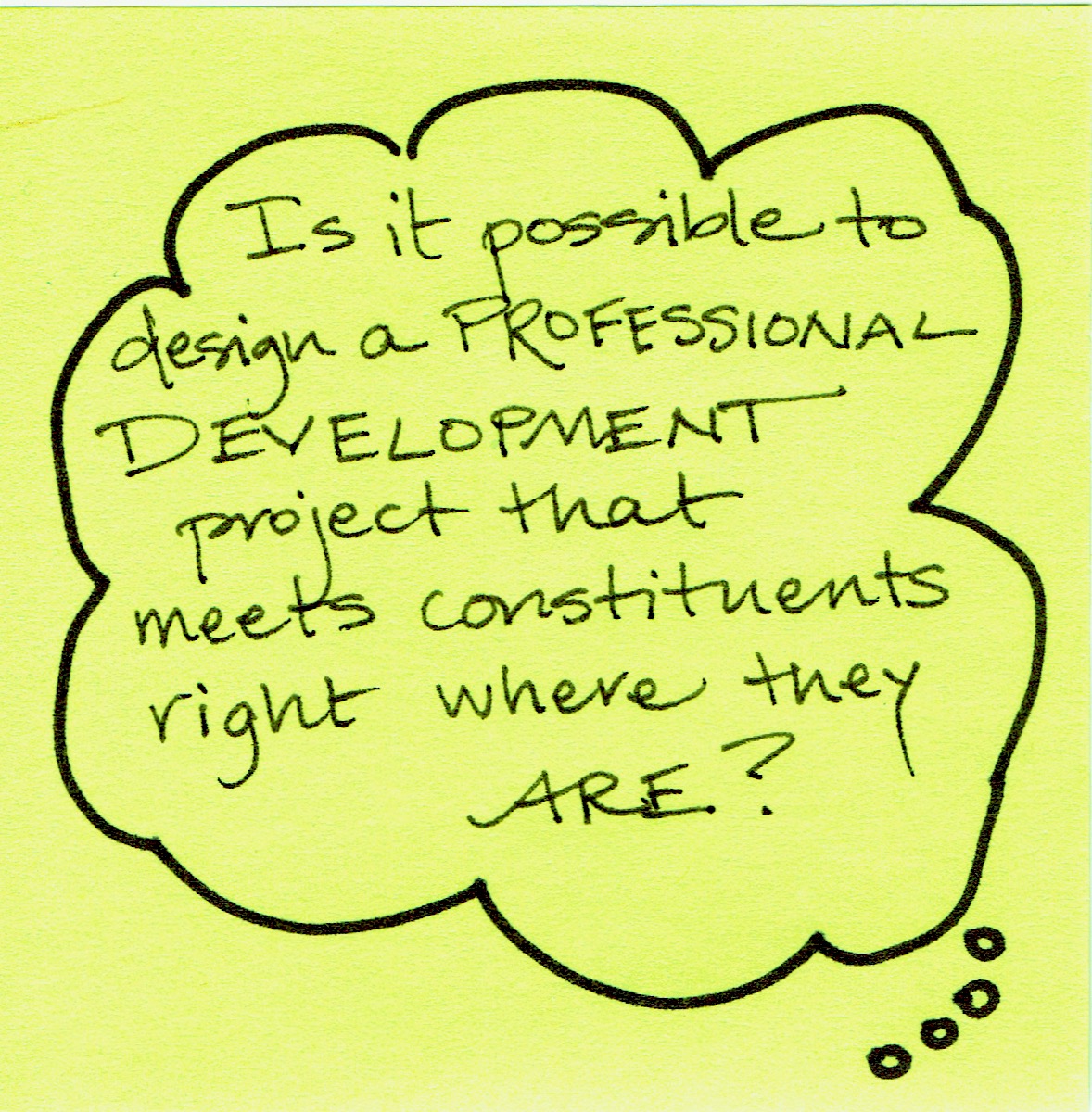
Of course this question may be answered in several ways! Meeting constituents right where they are has both physical and organizational implications as well as programmatic and cultural implications. By designing learning opportunities around collaboration, a group of learners may bring their experiences and expertise to the same table and then actively build on their shared knowledge and strengths, together. In this way, collaborative learning allows for the possibility that people just might be met right where they happen to be– socially, emotionally, and intellectually.
To emphasize the collaborative nature of the participant experience in the CNfC professional development offerings, we named them “Learning Collaboratives”. We intentionally sought to provide more collaborative experiences for our learning community members than what might be expected of the traditional study group or professional development experience.
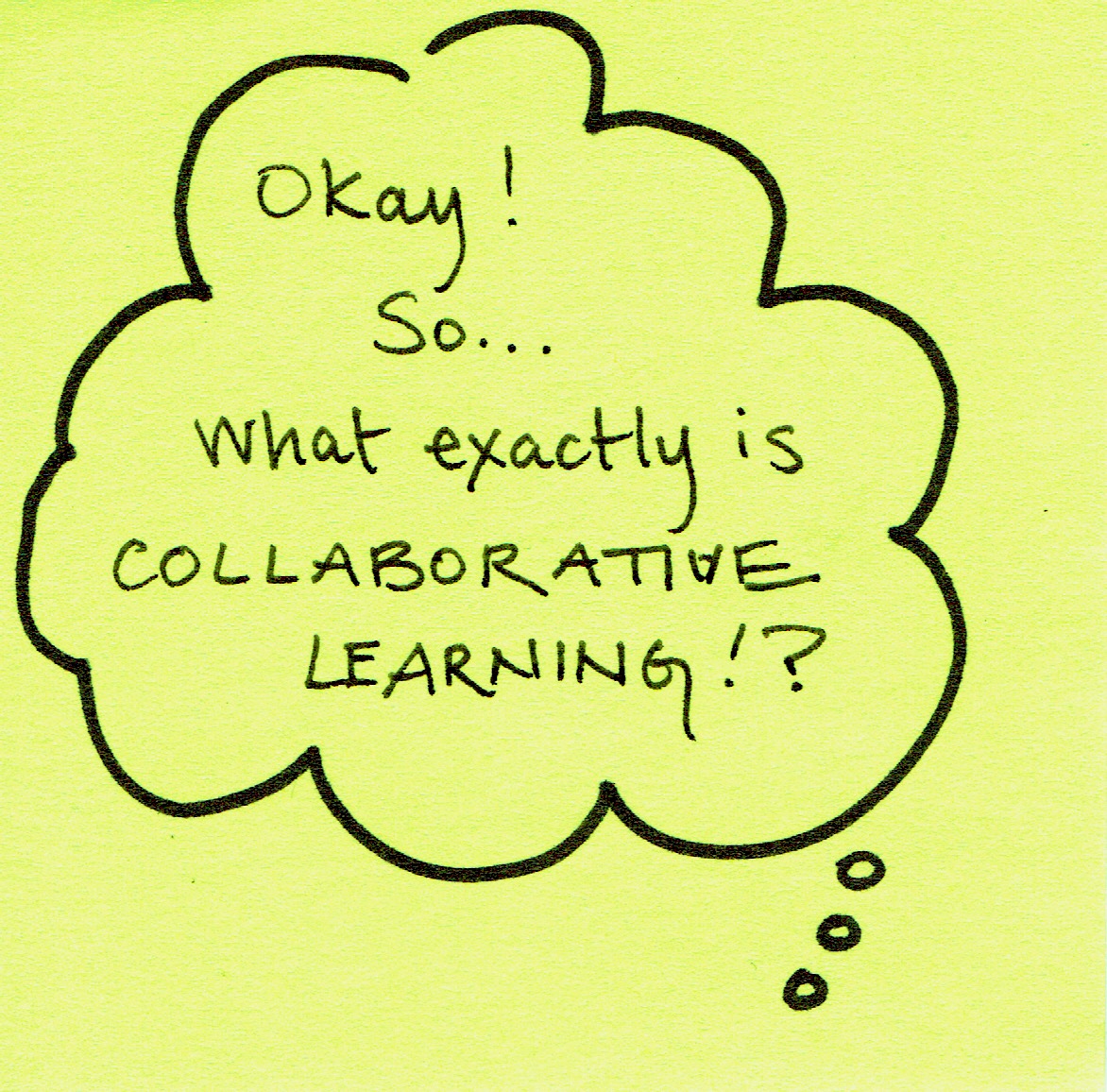
This chart, originally created by consultant Marsha Rhea, compares the two learning environments and guided our design of the program:
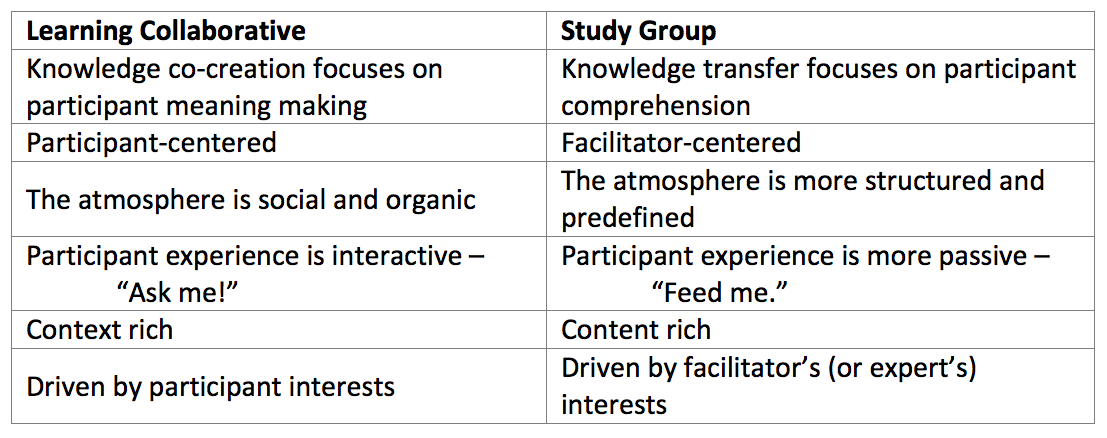
At the outset of the initiative to ensure that Learning Collaborative topics were participant-centered and relevant to the museum field in California, we applied a systematic approach to identify museum needs that involved crowdsourcing and revealed the overarching theme of the CNfC initiative– Connecting with People: Engagement and Accessibility. (Read the final report for this work, here.) We then brought museum thought-leaders together to co-create curricula that investigated the overarching theme of “Connecting with People” from different practical applications: Accessibility, Audience Research, and Engagement Strategies – making for three different studies.

Just as many museums today balance between honoring expertise and the interests of the collective commons, we recognized that museum professionals would benefit from co-creating their learning based on their immediate, relevant interests and gaining insight from recognized experts. We considered the whole participant experience in crafting the Learning Collaborative pilot, including both what participants would study and, most importantly, how.
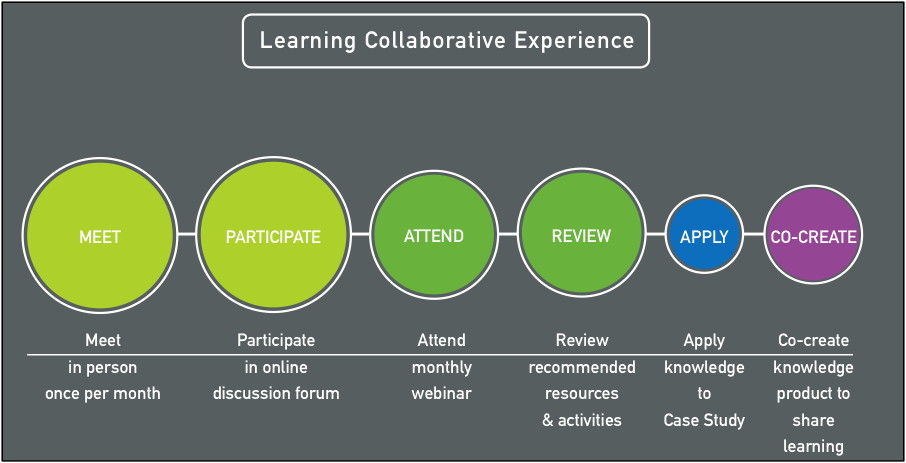
Learning Collaboratives were designed to take place over a six-month period. Each group met together in real life once a month and also had the opportunity to connect online in a social forum between meetings, access live webinars with museum leaders, and to peruse, as interested, a list of recommended readings and optional activities curated by museum thought-leaders.
The in-person meetings tended to be the most important anchor for the Learning Collaborative experience. Each meeting often included a number of creative protocols that were implemented to encourage collaboration and shared learning. The protocols shaped a diversity of spoken and written interactions in smaller and whole group activities, some of which are exemplified in the following images:
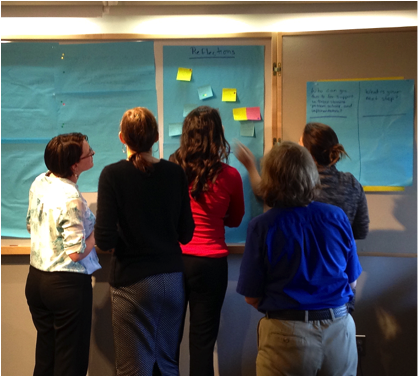
A group discusses ideas– first recorded on sticky notes independently– and regroups them by patterns and themes. 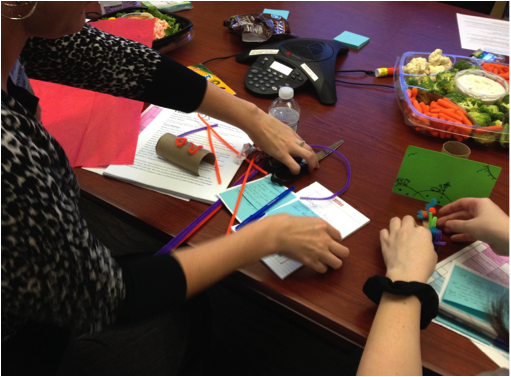
Participants prototype solutions with craft materials.
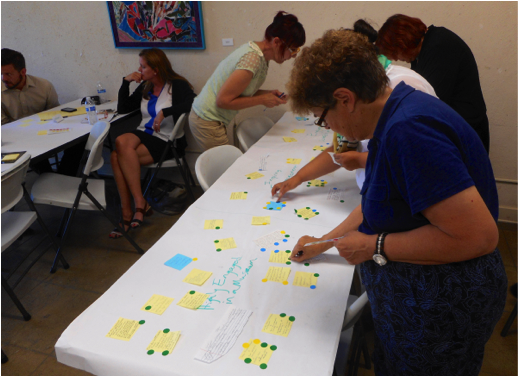
In a silent activity, participants circulate around tables to add ideas and expand on others in writing. Later they “vote” for ideas’ salience with stickers. This fuels the final whole-group discussion.
As we later learned from project evaluations, opportunities that emphasized intentional networking, collaborative meaning making as well as applying shared learning to practice were the most impactful. Specifically, we found that participants most valued the case study visits (in month four) and crafting final “knowledge products” at the conclusion of the project.
With different activities for exchanging and cultivating ideas embedded into each meeting as well as regular reflection practices, some participants also came away with confidence in collaboration:
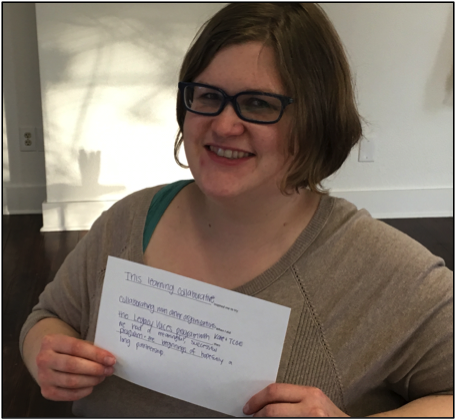
“This learning collaborative inspired me to try collaborating with other organizations. When I did the legacy voices program with Kate & TCOE, then we had a meaningful, successful program and the beginnings of hopefully a long partnership.” – Engagement Strategies Participant
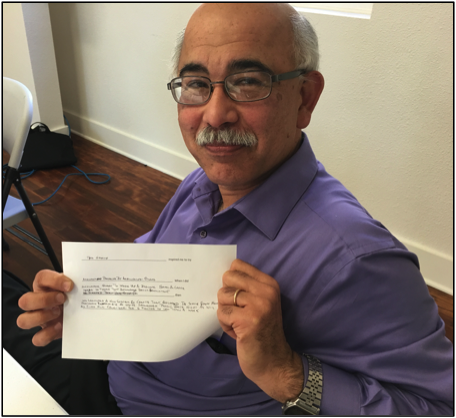
This group inspired me to try accelerating projects by empowering others. When I did encourage staff to work up and execute small and large ideas in teams that encourage family involvement, then we launched a new system of crafts [sic.] that offloaded the single staff member previously responsible & we’ve launched Parent Date Night as well as filled our calendar for 6 months in less than a week.” – Engagement Strategies Participant
What’s more, Learning Collaborative groups realized key takeaways for increasing museum accessibility, audience research, and engagement strategies. Many of these takeaways are documented in different formats (from toolkits to checklists and games) as the Learning Collaborative knowledge products, and you may access here.
In the spirit of collaboration, I invite you to share your experiences of collaboration, collaborative learning or creative protocols, and any questions that you might have about these experiences. I am confident that together we can all continue and deepen our practices and reflections regarding collaboration and collaborative learning!

-
For more about the Learning Collaborative organizational model, please read the partner WestMuse blog post, here.
-
The CNfC website provides a project overview and links to other resources, including participant takeaways.
-
The CNfC Phase 2 Final Report details findings from the Learning Collaborative pilot.
This project was made possible in part by the Institute of Museum and Library Services, grant number MG-10-14-0010-14, and with the generous support of all CNfC partner organizations.








Add new comment